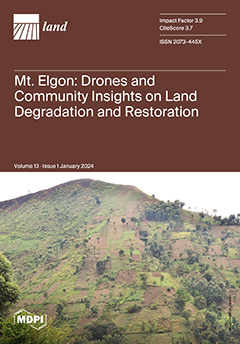Open AccessSystematic Review
European Permanent Grasslands: A Systematic Review of Economic Drivers of Change, Including a Detailed Analysis of the Czech Republic, Spain, Sweden, and UK
by
John Elliott, Sophie Tindale, Samantha Outhwaite, Fiona Nicholson, Paul Newell-Price, Novieta H. Sari, Erik Hunter, Pedro Sánchez-Zamora, Shan Jin, Rosa Gallardo-Cobos, Simona Miškolci and Lynn J. Frewer
Viewed by 1550
Abstract
Permanent grasslands (PG) feature in the European rural landscape and represent a major agricultural production resource. They support multiple non-provisioning ecosystem services (ES), including climate regulation, flood control, biodiversity, and pollination. PG are at risk of loss or degradation due to agricultural land
[...] Read more.
Permanent grasslands (PG) feature in the European rural landscape and represent a major agricultural production resource. They support multiple non-provisioning ecosystem services (ES), including climate regulation, flood control, biodiversity, and pollination. PG are at risk of loss or degradation due to agricultural land use and land management changes. The objective of this systematic review is to identify the main economic influences shaping management and maintenance of PG, and the risks and opportunities for delivery of a range of ES. A total of 51 papers were included. Relevant policy interventions and economic drivers are identified in relation to how they shape the management of EU grasslands over time and across farming systems, countries, or biogeographic zones. A high reliance on public payments from the EU Common Agricultural Policy (CAP), with uneven impact on mitigating PG losses and associated ES provisions, was identified, which needs to be considered in relation to ongoing CAP reform. There is a gap in the literature regarding economic tipping points for change. Future research needs to identify and map ES provisions by PG along with trade-offs and synergies, and link this to policy. There are substantive challenges to maintaining Europe’s PG area and management, which must be addressed through EU-wide instruments.
Full article
►▼
Show Figures





